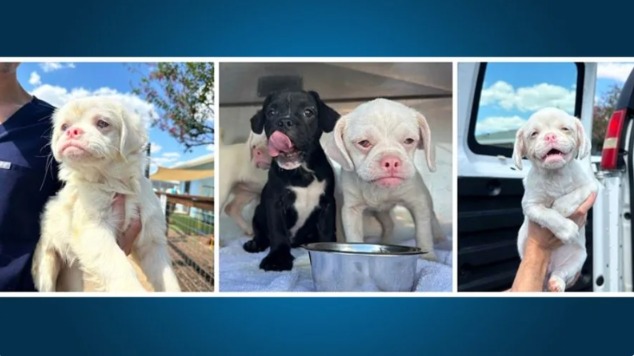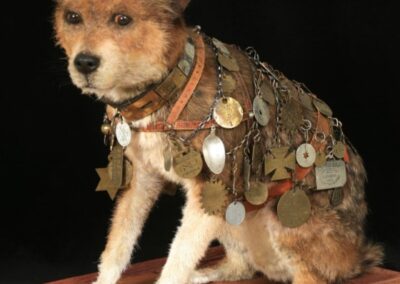
I want you to feel this with me: imagine a lonely property in Bastrop County, Texas. A place where nineteen dogs lived—not inside, not as pets, but as cast-offs.
Their days were soaked in neglect, their bodies crawling with parasites, their eyes hollow with silent pain.
These dogs ranged in age—from just a few months old to a few years. Small mixed breeds, many likely French Bulldog/Pug crosses.
They were mostly outdoors. Their bodies lined with raw skin, ears and eyes infected, fleas biting deep. Internal parasites had carved parts of them from the inside.
These were not dogs living. These were souls clinging to survival.
Someone, somewhere, walked past them for too long. Neighbors may have heard the whining; the dogs may have scratched at fences.
But no rescue came… until Austin Humane Society (AHS) and Bastrop County Animal Services answered a call.
On one cool Texas morning, they showed up on that property—stepping through gates, into dirt yards, among matted fur and fear.
When they found them, not one dog bolted. Not one snarl. They were too tired. Too broken. Too used to humans passing by like they didn’t exist.
The rescuers moved carefully, softly. They gathered leashes. They clipped cages. They spoke in low tones, offering water and calm.
And they carried those dogs—fragile, weak, trembling—out of the shadows into a new world.

The next hours were brutal. Medical exams unspooled horrors: flea infestations swarming like a plague. Internal parasites devouring organs.
Skin, eye, and ear infections so bad the flesh was raw. These dogs had been ignored long enough that every part of them ached.
But here’s where the story shifts: most of those dogs passed their exams. Most were salvageable. “Friendly with other dogs,” officials said. “Ready to be adopted, once healed.”
That’s not a phrase you hear every day when 19 dogs have nearly died in the dirt.
AHS opened its doors. They sterilized. They vaccinated. They treated. And they offered these animals something they’d never known: hope.
The dogs would be spayed or neutered, microchipped, and placed under adoption — at fees between $125 and $300, based on age. All to give them a chance at life.
Now imagine: a dog that once trembled in muddy earth, now upright in a kennel. A dog whose skin was raw, now sprouting fur again.
Eyes once dull with pain, now tracking a toy. The change takes time. The healing takes love. But the transformation begins because someone refused to look away.
We talk about “rescue” like it’s a word. But here, rescue was hands in fur, tears during exams, bills climbing higher than most of us would imagine.
Rescue was courage—stepping onto a property where life had already begun to fade and saying, “Not today.”
Rescue was the people who walked through gates stained with neglect and said, “We’ll take it from here.”

These 19 dogs are now stories in motion. Some will find homes immediately. Some will take weeks, months, therapy, patience.
But they are breathing, they are alive, they are being given a second act.
So what I want you to take away is this: rescue is not a gimmick. It’s not something you watch from afar. It’s hands, presence, refusal to ignore.
Because when one life matters—even nineteen at once—the universe tilts. When someone says “Yes, I believe in you,” that act rewrites fate.
If this moved you (and I bet it will), share it. Stand for adoption. Volunteer. Donate.
Because right now, there’s another dog, somewhere, waiting for someone who refuses to keep walking past.
Because the difference between life and death for 19 dogs was a single moment—and people showed up.
And now those nineteen get to live.



